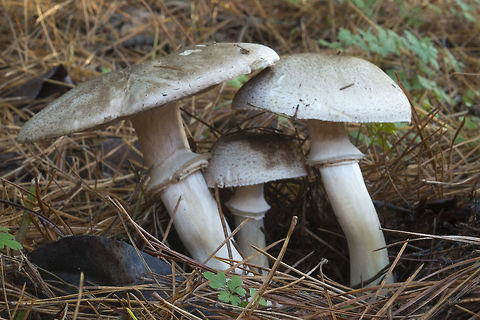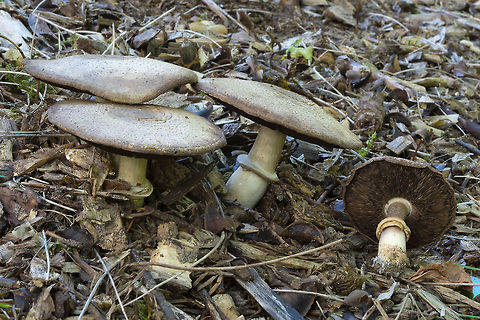
Appearance
The cap has a greyish-brown patch in the centre and cold grey-brown scaling on the surrounding off-white background. It is 5 to 9 centimetres in diameter, and yellows when bruised. It is ovate when young, flattening later. The stem has a drooping ring, and stains yellow very easily when bruised, this colour then changes to brown over time. The stem flesh bruises yellow only faintly, and is more noticeable in the base. The gills are crowded, and free, as is typical for an ''Agaricus''. They are pink on young specimens, but brown to black on older fruit bodies. The flesh is white and does not change colour on cutting. It is noted by some authors as smelling like ink, iodoform, sweat, or mouldy straw. The spores are 4–6 x 3–4 µm, and are elliptical.A similar species occurring in North America, ''Agaricus praeclaresquamosus'' A.E. Freeman 1979, has several variants, some of which are larger.
The rare ''Agaricus phaeolepidotus'' also has the iodoform, or ink smell, but has browner cap scales, and stains yellow less readily.

Distribution
''Agaricus moelleri'' is found in the temperate zones of the northern hemisphere. North America, Britain, and Europe, growing in mixed forests and woods. It is widespread, but can be locally rare, and favors rich alkaline woodland, or parkland.
Habitat
''Agaricus moelleri'' is found in the temperate zones of the northern hemisphere. North America, Britain, and Europe, growing in mixed forests and woods. It is widespread, but can be locally rare, and favors rich alkaline woodland, or parkland.References:
Some text fragments are auto parsed from Wikipedia.